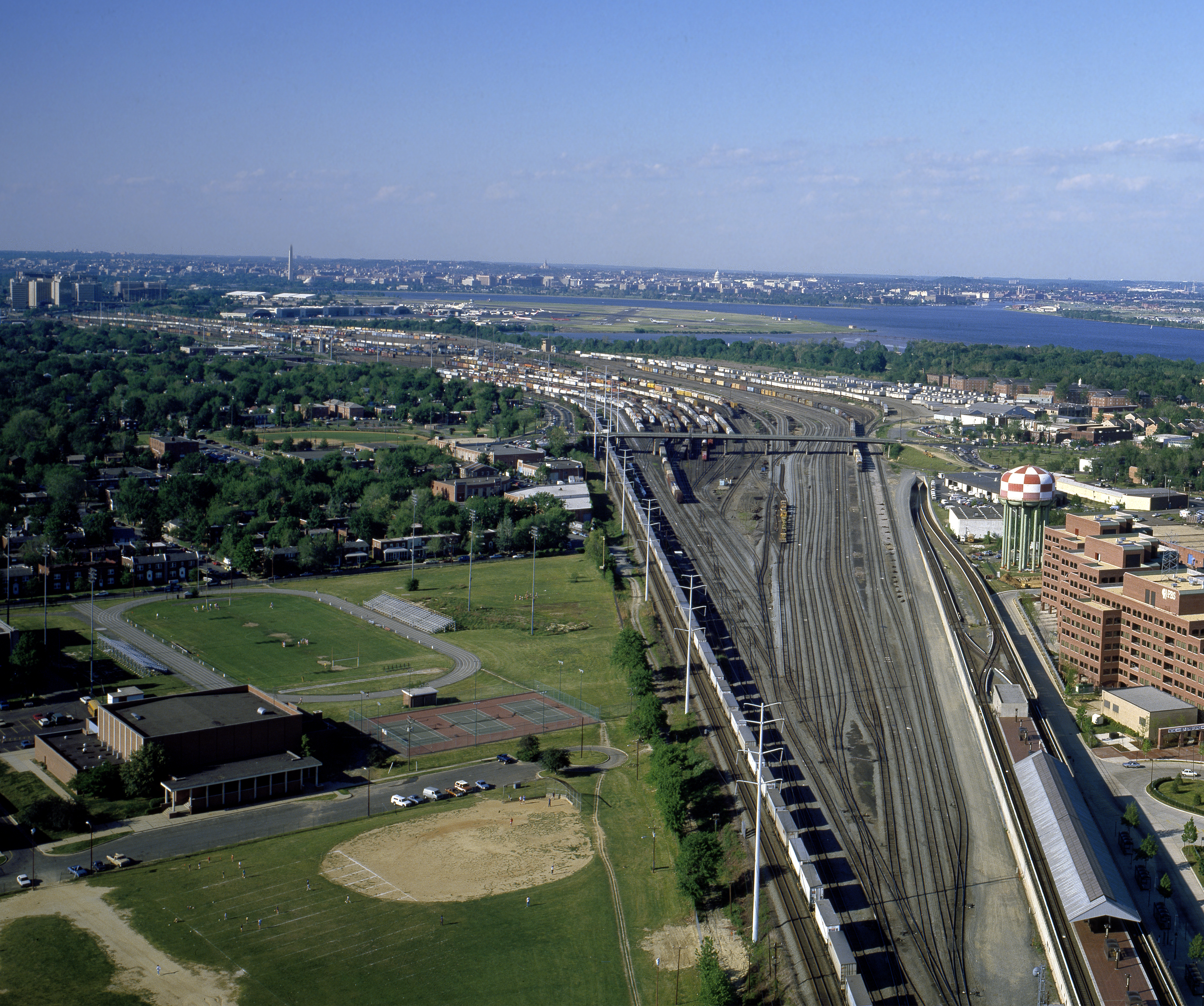The single-highest scoring infill station location from my back-of-the-envelope comparison was Berwyn, thanks to good transit connections, strong land use and development potential, as well as relatively easy construction. Infill stations at Kansas Ave or New Hampshire Ave are also common among crayonistas.
Berwyn
At first glance of a map, there’s a strong case for adding an infill station on the Green Line between College Park and Greenbelt. The two existing stations are 2.3 miles apart. The only road crossing the tracks in that span is Greenbelt Road, approximately halfway between the two stations.
I’ve opted to call this location ‘Berwyn’ due to the proximity to the Town of Berwyn Heights, and because the name would fit well as a unique addition to WMATA’s station name, but we’re talking about a station to be built near where Greenbelt Road crosses the tracks.

The wide right-of-way includes three Metro tracks and CSX’s Capital Subdivision (home to MARC’s Camden Line). WMATA’s third track isn’t used for regular service, but for testing new railcars, which are usually delivered to the system’s Greenbelt Yard.

Connections: Because Greenbelt Road is a bit of a choke-point in crossing the railroad tracks, it already hosts a fair amount of bus service. Additionally, many of the routes traversing Greenbelt Road eventually turn north to terminate at Greenbelt Station, adding time and distance to a journey that could be shorter – if only there were a station where Greenbelt Road crosses the tracks.

Land Use: The Berwyn location is already seeing transit-oriented development with the townhouse project just north of Greenbelt Road – but it’s counted as part of the Greenbelt station development, despite the fact you can’t really walk between the two.

However, there are great development opportunities next to an infill station. Immediately to the west is the University of Maryland’s Severn Library, a high-density storage facility located in a former Washington Post printing plant. The site includes ample surface parking lots, ready for redevelopment. To the east is Beltway Plaza mall, already planned for additional housing. And in between, lots of properties fronting on Greenbelt Road are ripe for suburban retrofits and incremental additions of density.
Ease of Construction: The big reason Berwyn scored as the best overall infill station opportunity is because of (hopefully) easy construction. The right of way is generous; there would seem to be opportunities to add platforms with minimal track reconfiguration; or, use the generous spacing to reconfigure the tracks to make room for an island platform. Regardless of the design, the available space opens a lot of doors.
An ideal configuration would link mezzanine access directly to the Greenbelt Road bridge, allowing for easy bus-to-Metro connections and simple pedestrian access. Some additional work is required to create welcoming walking environments.
New Hampshire Ave
Should we call this spot Kansas Ave? New Hampshire Ave? That’s part of the conundrum. You can’t really do both, you’d have to pick one. And each avenue has big drawbacks.

The context here is a 1.8 mile gap on the Red Line between Fort Totten and Takoma stations. Adding a station at either Kansas Ave or New Hampshire Ave would be plausible.
Connections: existing bus service shows a clear preference for connections at New Hampshire Ave, which hosts WMATA’s K6 and K9 Metro Extra routes. Kansas Ave, by contrast, is home to only the modest K2 bus, with just 22 round trips per day.

Land Use: a quick glance at a Google Maps aerial shows why NH Ave has the bus service: Kansas Ave terminates at the DC line, whereas NH Ave turns into a major suburban commercial strip.
However, within the District, the situation is reversed: Kansas Ave is surrounded by industrial uses and potential redevelopment sites, while NH Ave is hemmed in by parkland and steep slopes before you hit existing single family residential areas.
DC has a interest in protecting some industrial sites; but doing so is incompatible with adding a new Metro station, which will basically require high-density land use.

Ease of Construction: this is the real challenge for either location: it would be a massive construction project – something on the scale of the original construction of the Red Line itself.
The Red Line is sandwiched between two tracks of CSX’s Metropolitan Subdivision. Building Metro required a complete reconstruction of the entire rail corridor; WMATA used the center of the ROW to preserve freight rail access to sidings along the route – most of which have since been abandoned.
Adding platforms at either location requires relocating the CSX tracks at a minimum, and perhaps the WMATA tracks as well (depending on platform configuration). Additionally, the New Hampshire Ave location is amidst a slight curve, further complicating construction.
Either location would be expensive, decreasing the prospects for these locations. However, the Kansas Ave location would seem to be the more challenging site, requiring rebuilding the existing underpass, acquiring adjacent properties, etc. The existing NH Ave overpass provides a bit more margin, but still presents a tight fit.



















